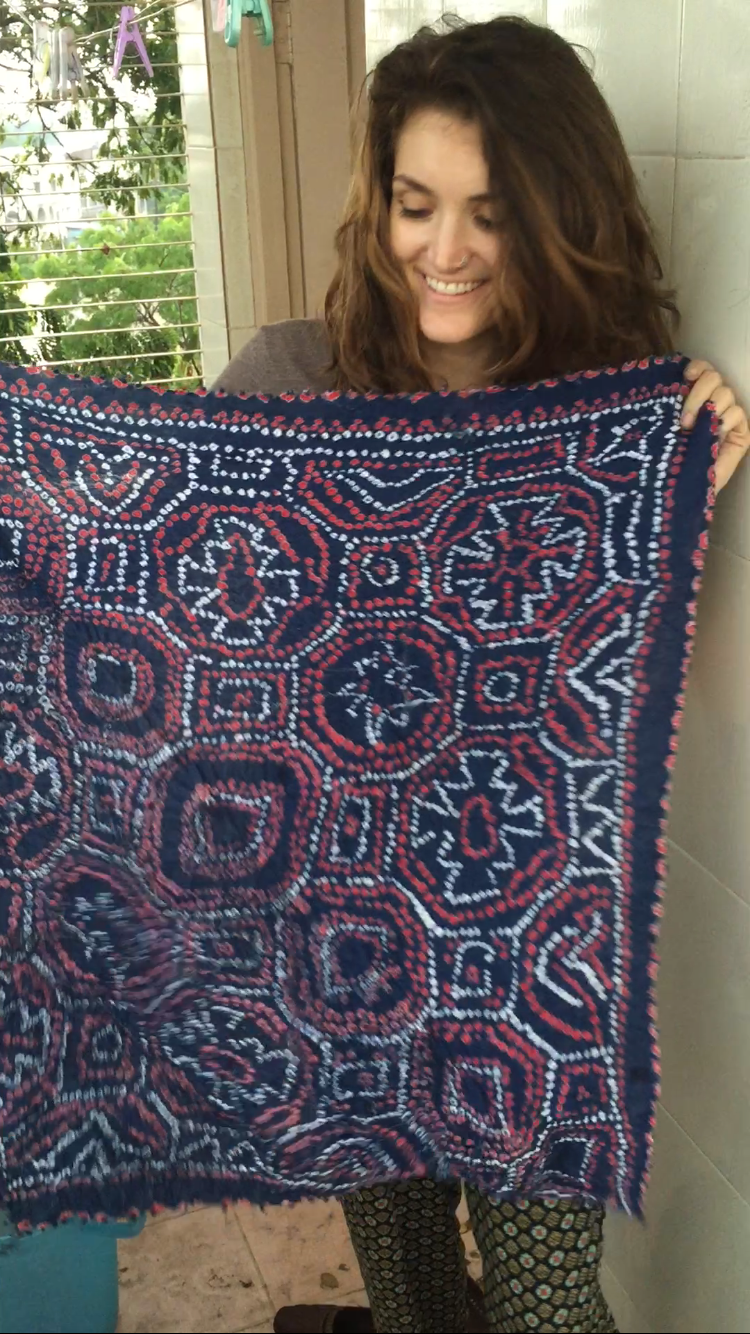
2016
12"h, 16"w, 7"d
Cotton rope

2016
(detail)
cotton rope

2016
16"h, 14"w, 1"d
embroidered post-consumer waste plastic on woven plastic sack, insulation foam

2016
(detail)
embroidered post-consumer waste plastic

2016
rope made from cotton & textile mill waste warp

2016
35"h, 35"w
Indigo and madder on cotton

Click image for video
Derived from the sanskrit word bhandi, “to tie,” bandhani is a traditional resist dyeing technique that involves the tying of small sections of cloth with thread then dyeing the fabric. The tied areas resist the penetration of dyes and reveal dotted patterns when removed.
For this piece, I first tied all the dots that appear white, then dyed the cloth in madder. I then tied a second round of knots, which are all the dots that appear red, and dyed the cloth in indigo. Here is the final step of pulling out all the knots to reveal the pattern.
Special thanks to Abdullah and Jabbar Khatri and their team at Sidr Craft in Bhuj for guidance and assistance with the dye process!







2016
12"h, 16"w, 7"d
Cotton rope
2016
(detail)
cotton rope
2016
16"h, 14"w, 1"d
embroidered post-consumer waste plastic on woven plastic sack, insulation foam
2016
(detail)
embroidered post-consumer waste plastic
2016
rope made from cotton & textile mill waste warp
2016
35"h, 35"w
Indigo and madder on cotton
Click image for video
Derived from the sanskrit word bhandi, “to tie,” bandhani is a traditional resist dyeing technique that involves the tying of small sections of cloth with thread then dyeing the fabric. The tied areas resist the penetration of dyes and reveal dotted patterns when removed.
For this piece, I first tied all the dots that appear white, then dyed the cloth in madder. I then tied a second round of knots, which are all the dots that appear red, and dyed the cloth in indigo. Here is the final step of pulling out all the knots to reveal the pattern.
Special thanks to Abdullah and Jabbar Khatri and their team at Sidr Craft in Bhuj for guidance and assistance with the dye process!